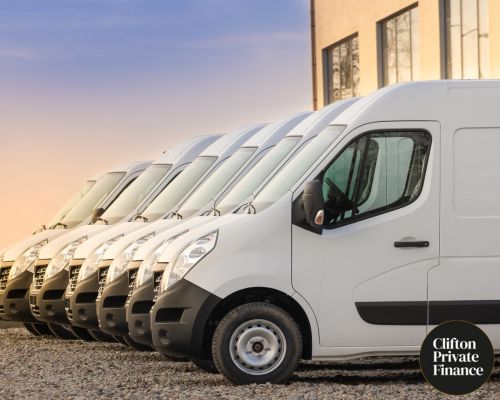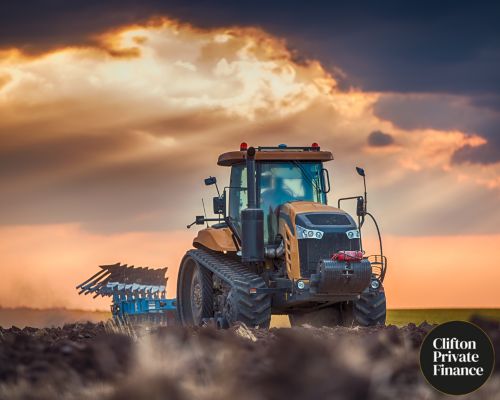What is Wind Turbine Finance?
Wind turbine finance is a tailored financial solution that enables businesses, landowners, and communities to invest in renewable energy projects involving wind turbines without the burden of substantial upfront costs.
Given the rising demand for sustainable power generation and the UK's commitment to achieving net-zero emissions by 2050, wind turbines have emerged as a critical component of the nation's energy infrastructure.
However, the capital required for these projects can be substantial, often ranging from £500,000 to £5,000,000 or more, depending on the size and scale of the installation.
At Clifton Private Finance, we specialise in facilitating wind turbine finance options that allow the cost to be spread over a manageable timeframe, typically spanning 5 to 20 years.
This approach empowers our clients to harness the latest in wind energy technology, contributing to a greener future while generating long-term revenue streams and benefiting from various government incentives.
What Types of Finance are Available for Wind Turbine Projects?
When it comes to financing wind turbine projects, Clifton Private Finance offers two primary financial arrangements: hire purchase agreements and leasing options.
Both are designed to align with the different requirements and preferences of our clients, whether they are commercial enterprises, landowners, or community groups.
Hire Purchase Agreements:
A hire purchase agreement is a straightforward finance option that allows the client to own the wind turbine outright upon the completion of the payment term. Initially, a deposit is made—typically ranging from 10% to 30% of the total cost—followed by fixed monthly instalments.
Ownership of the turbine is immediate, with the finance company retaining the right to repossess if payments lapse. This option is particularly advantageous for clients looking to make a long-term investment in renewable energy generation, as it also allows for capital allowances to be claimed, potentially reducing tax liabilities.
Leasing Options:
Leasing, on the other hand, provides a flexible arrangement where the client pays a monthly rental fee to use the wind turbine for a predetermined period, usually between 5 to 20 years. While the turbine is not owned by the client during the lease, there is often an option to purchase at the end of the term for a nominal fee, extend the lease, or simply return the asset.
This option is ideal for clients who prefer lower initial expenditures, wish to maintain cash flow, or anticipate the need for upgrading their systems due to technological advancements or changing energy needs. Additionally, rental payments under a lease can often be deducted from taxable income, offering potential tax benefits.
How Does Wind Turbine Finance Work?
The process of securing finance for wind turbine projects is streamlined and customer-centric, mirroring the approach taken for other types of asset finance. Clients seeking to invest in wind energy must first identify a suitable location and obtain the necessary planning permissions and grid connection agreements. Following this, engaging with a finance broker like Clifton Private Finance is the next step. Our role is pivotal in canvassing the financial landscape to procure the most favourable terms for our clients.
We negotiate diligently on behalf of our clients to secure deals that resonate with their financial objectives.
Our expertise extends to guiding clients through the intricacies of the application process, ensuring clarity and ease at every stage.
We remain actively involved until the wind turbine is fully operational, guaranteeing a seamless transition and optimal satisfaction.
Understanding Wind Turbines and Installations
Wind turbines are a critical component of the UK's renewable energy strategy, harnessing the power of wind to generate clean electricity. The UK market offers a variety of wind turbine models and configurations, each designed to meet specific requirements and site conditions.
Types of Wind Turbines
Horizontal Axis Wind Turbines: These are the most common type of wind turbines, featuring a rotor with blades that spin around a horizontal axis.
They can be further categorised into:
Onshore Wind Turbines: Installed on land, these are typically smaller in size and suitable for commercial or community-scale projects.
Offshore Wind Turbines: Larger and more powerful, these turbines are installed in bodies of water, such as the North Sea, and are often part of large-scale wind farms.
Vertical Axis Wind Turbines: Instead of a horizontal axis, these turbines have blades that rotate around a vertical axis. While less common, they can be advantageous in certain urban or small-scale installations.
Installation Considerations
When installing a wind turbine, several factors need to be considered:
Wind Resource Assessment: A thorough assessment of the wind resource at the proposed site is crucial to determine the feasibility and potential output of the turbine.
Planning Permission: Obtaining the necessary planning permissions from local authorities is a critical step, as wind turbines can be subject to various regulations and restrictions.
Grid Connection: Establishing a connection to the local electricity grid is essential to export the generated power and potentially benefit from government incentives like the Smart Export Guarantee (SEG).
Site Accessibility: The installation site must be accessible for the delivery and assembly of the wind turbine components, which can be large and heavy.
Environmental Impact: Assessing the potential impact on local wildlife, noise levels, and visual impact is important to ensure compliance with regulations and minimise any negative effects.
Budgeting: Costs can vary widely, from £500,000 for small-scale turbines to £5,000,000 or more for large-scale wind farms, depending on the size, location, and complexity of the project.
Popular Models in the UK
Several leading wind turbine manufacturers operate in the UK market, offering a range of models suitable for different applications:
What are the Benefits of Wind Turbine Finance?
Wind turbine finance offers a range of advantages for businesses, landowners, and communities looking to invest in renewable energy generation:
Improved Cash Flow: By avoiding substantial upfront costs, clients can maintain better working capital and cash flow.
Revenue Generation: Wind turbines can generate long-term revenue streams through the sale of electricity or government incentives like the SEG.
Environmental Benefits: Investing in wind energy contributes to reducing carbon emissions and promoting sustainability.
Technological Advancement: Clients can stay abreast of the latest wind turbine technology, upgrading or replacing systems as necessary without financial strain.
Tax Benefits: Payments made towards wind turbine finance can often be offset against tax liabilities, providing financial advantages.
Energy Independence: Generating on-site electricity can reduce reliance on the grid and exposure to fluctuating energy prices.
Are There Any Drawbacks?
While wind turbine finance offers numerous benefits, there are some considerations to bear in mind:
Overall Cost: Financing may result in higher total expenditure over time due to interest rates and fees.
Contractual Obligations: Clients may find themselves bound by a contract that may not align with future changes in their situation or needs.
Maintenance and Insurance: Agreements may require the wind turbines to be maintained in good condition and insured, which could incur additional costs.
Ownership: Full ownership of the wind turbines is typically not transferred until the end of the finance agreement.
Early Termination: Terminating the finance agreement ahead of schedule may lead to penalties or additional charges.
Planning Restrictions: Wind turbine installations may face local planning restrictions or opposition, which can delay or prevent projects.
How can we help?
In need of wind turbine finance & leasing?
We can help you:
- Decide if wind turbine finance & leasing is right for you
- Understand what type of loan best suits your situation
- Feel comfortable with how the process works and what the costs will be
And when we've established the best type of finance for you, we will:
- Compare rates from multiple lenders across our network
- Negotiate the best deal for your circumstances
- Guide you through the application process
- Chase through your application until the wind turbine is operational







 .
.


